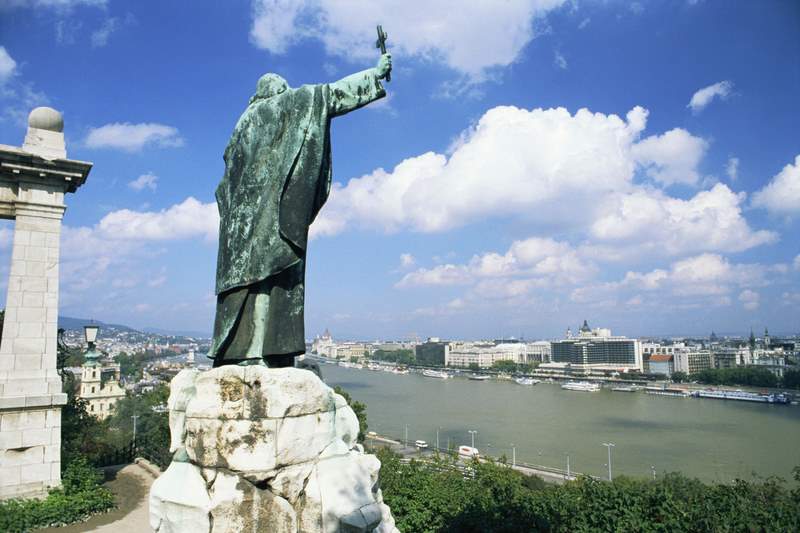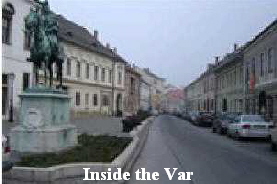|
|
||||||||
 |
|
Budapest is a fabulous city to visit, elegant, bustling and a lot of fun. These days most people under thirty speak English, which is lucky because Hungarian is about the toughest language in Europe to learn. Everything works pretty well, crime is low by European standards (although as in any city you should be on your guard) and on the whole it is a pretty civilised place. Unfortunately Hungarian is a language which is not only impenetrable but makes old friends chatting sound as if they are having a violent argument. Once you get over that, though, the city is a place its pretty easy to get along with. The city is really in two halves, ancient Buda in the west and (newer) Pest in the east, separated by the river Danube The whole city is dominated by a great rocky outcrop on the Buda side of the river on which sits the Var. The Var is the old citadel of Budapest, usually called the castle district. It is a magic place, a world heritage site full of ancient buildings including the Palaces of the emperors of Austro-Hungary, art galleries and museums, the Cathedral and streets of beautiful ancient houses. To the east the Var commands wonderful views of the Danube and over the new city of Pest on the other side of t Only the cars of those living in the Var are allowed inside the walled city and it is one of the quietest and safest places in Budapest. It has many small cafes, bars and restaurants. Because it is set high above the city cool breezes blow through it even in the height of summer. In high summer the Var can be busy with tourists, although it never becomes uncomfortably so. Luckily they go home early and in the evenings and mornings the citadel is pleasantly uncrowded. Spring and autumn are great times to visit, if you are free at that time, the weather is particularly pleasant in Budapest. Personally I like the winter best of all, especially when the city is white with snow, looking out of a cafe window with a piece of Hungarian chocolate cake and glass of the local spirit, Palinka. However whenever you go, the castle is a magic place, and definitely the best place in Budapest to retreat to after a hard day in the city. Other places in Buda Buda itself is a comfortable mix of old and new. It has a shopping area at Moskva Ter (Moscow square, they have been arguing about changing the name for years). This has supermarkets stuffed with great food and wine as well as specialist shops selling everything from hand-cut crystal to stylish clothes. There are both local and international chains. It also has Vizivaros (water town) opposite parliament, an ancient area of cafes and churches adjoining the financial district. There are lots of thermal baths fed by the volcanic springs which well up from underneath the c Buda is a good place to eat with many small cafes and restaurants. Hungarian restaurant food hit a low point during communism but over the last ten years it has undergone a startling renaissance with the rediscovery of the traditional cuisine and the opening of restaurants serving just about every world cuisine. It is no longer hard to find good vegetarian food or great pasta and the fish is surprisingly good for an inland country. Try the halasleves (fish soup) and real gulyas (goulash - a soup here, what we call goulash is called porkolt by the Hungarians). The game is to die for, all washed down with some great Hungarian wines. Pest Where Buda is quiet and sedate, Pest is lively and exciting. The centre of Pest is just exactly like you would imagine Vienna would be like if you had never been there. But a lot nicer and a whole lot cheaper. The similarity is hardly surprising, in the nineteenth century Budapest was the second city of the Austro-Hungarian empire, a place almost as important as Vienna itself. It is a bustling grand nineteenth century city with fabulous dark cafes serving wonderful cakes and coffee. There are lots of excellent restaurants, particularly if you get away from the main tourist drag. There are some excellent night-clubs if you want to dance the night away. There are also wonderful galleries, museums, shops selling everything you can imagine, flea-markets and bars, an opera house and concert halls. There is a funfair and a zoo. There is even a fake medieval castle with a moat on which you can hire a boat and row, or in winter, skate. Budapest is a very affordable city by European standards. You can eat out in a good restaurant for half the price of London or Paris, and get seats at the opera, the ballet or concerts for a third of the cost. Standards are generally good, only the theatre disappoints, although unless you speak Hungarian it is hardly likely to worry you. Public transport is cheap, safe and clean with a fast metro, an entertaining if bone-shaking tram system and so many buses that on some routes when you board your bus you can see the next one coming along behind. The taxis are cheap and clean and taxi-drivers no longer have a reputation for being motorised thieves, but it pays to use one of the big taxi firms (ring for a cab, they speak English). If you want to get the best out of the city there are a few links below that we hope you will find very useful. |
| [Welcome to the Miro flat] [Availability] [The City] [Getting there] [Contact me] |
 he river. To the west it looks out over the Buda hills with the view only slightly spoilt by the railway station in the valley far below. Its walls are intact and magnificent.
he river. To the west it looks out over the Buda hills with the view only slightly spoilt by the railway station in the valley far below. Its walls are intact and magnificent. ity, including the ornate and rather wonderful Gellert baths in the Gellert hotel. Buda was occupied by the Turks for three hundred years and the locals got a taste for turkish baths, just as the Turks borrowed the idea from the Romans.
ity, including the ornate and rather wonderful Gellert baths in the Gellert hotel. Buda was occupied by the Turks for three hundred years and the locals got a taste for turkish baths, just as the Turks borrowed the idea from the Romans.